10 Best Project Ideas For Engineering Students
Engineering projects provide tremendous opportunities for professional development, whether you wish to work in technology as an employee or as an entrepreneur. Students will get the abilities, knowledge, and expertise they need to thrive in their professions via project-based learning.
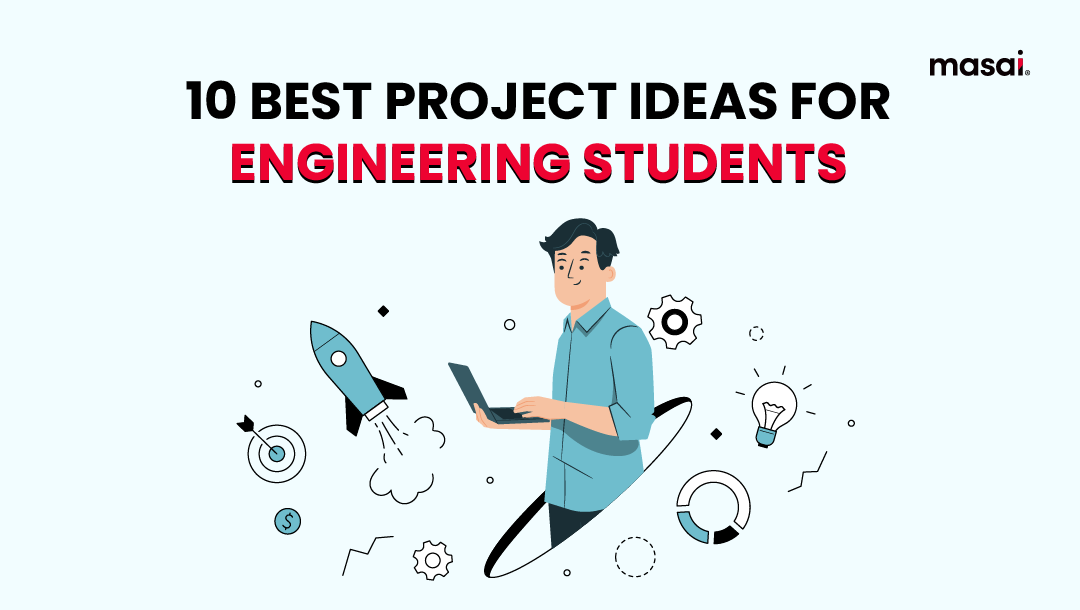
Authored by: Vijay Singh Khatri

Graduate in Computer Science, specializing in Programming and Marketing. Vijay is very fond of writing tech articles and creating new products. He's also working on his new startup Duniakagyan.com. If you want to connect with him or get to know him better, follow him on: Linkedin | Twitter
Introduction
Engineering projects are an excellent way to incorporate your theoretical knowledge into practicality.
As there are various fields in engineering, I will try to cover the core ones in this post.
However, most students are confused in deciding what to build. Some steps can help you get through it; take a look:
- Understand your interest.
- Find a real-life problem and spend a good time on its solution.
- Start researching and gathering your resources.
- Create a team for fulfilling different requirements such as design, development, content, etc.
- Keep testing at every stage to find issues and resolve them.
Now, let me help you with some project ideas here.
Project Ideas for Engineering Students
AI-powered Agricultural Monitoring System
Agriculture is one of the most important sectors that contribute to the economy in every country. However, it lacks modern equipment and methods to guarantee excellent outcomes.
Engineering students can develop an AI-powered agricultural monitoring system that helps to understand different aspects of soil, such as its moisture, temperature, etc. understanding these factors will result in improving crop yields.
Additionally, students can use microcontrollers, sensors, and machine learning algorithms[1] to achieve the same.
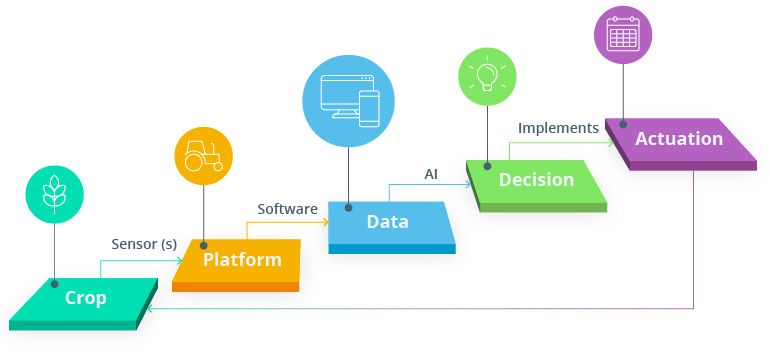
Highlights
- Precision Agriculture
- Soil and Crop Monitoring
- Weather Forecasting
- Pest and Disease Detection
- Irrigation Management
- Remote Monitoring
- Livestock Monitoring
Solar-Powered Charging Station
Due to the increasing pollution and chemical waste, solar power is the need of the hour. It is a renewable option and eco-friendly. Moreover, it is becoming popular day by day.
There are many ways to use solar energy, and one of them is building a solar-powered charging station!
Students can focus on building their own charging stations to charge multiple electronic devices such as mobile, laptops, tablets, etc. Core things needed would be batteries, photovoltaic panels, charging controllers, etc.
Additionally, students must focus on making it a portable machine. This would help access people lacking an electric connection in some areas.
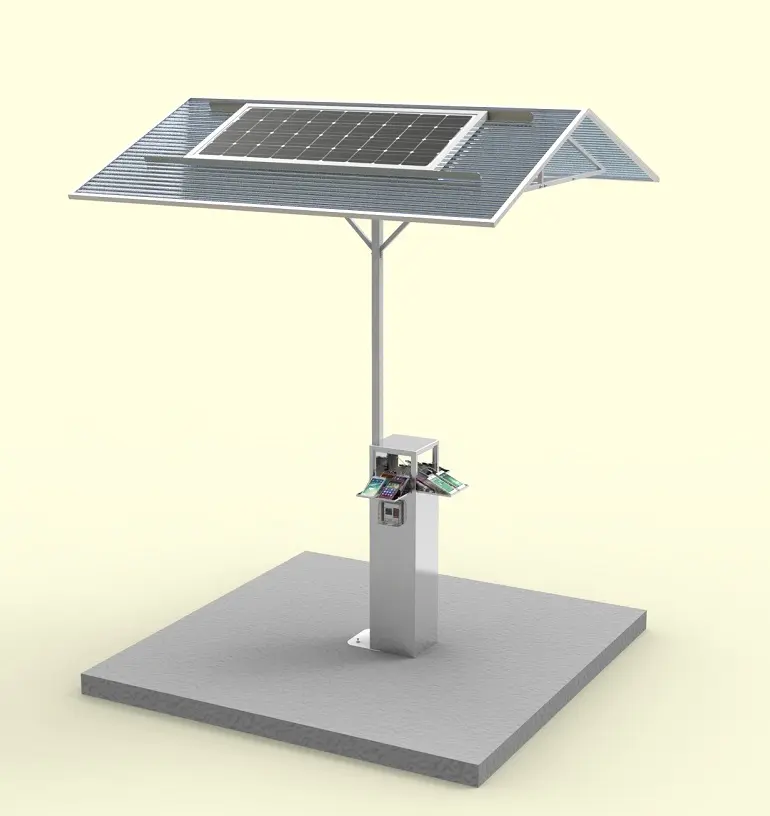
Tip: You can also develop it to charge electric vehicles as well. The demand for electric vehicles will increase in the future.
Highlights
- Renewable Energy Source
- Off-Grid Capability
- High-Efficiency Solar Panels
- Multiple Charging Ports
- LED Indicators
- Smart Energy Management
Smart Grid System
Engineering students have the option to create a smart grid system to manage the consumption of electricity smartly.
The core concept of this grid system is to use advanced technologies and monitor, control, optimize, and distribute electricity.
It is essential to conduct proper research and plan to understand your grid system's components, including software and hardware requirements, data storage, communication systems, and power sources.
Afterward, give time to component selection for your system. Commonly, sensors, communication modules, microcontrollers, and communication systems are used in this project. Keep testing at every stage of development to get an optimized result at the end.
Highlights
- Advanced Metering Infrastructure
- Grid Automation and Control
- Renewable Energy Integration
- Distribution System Optimization
- Demand Response Management
- Energy Storage Systems
- Smart Home Integration
Wearable Health Monitoring Device
As evident, health monitoring devices are getting more popular day by day. Students can think about building such a wearable device!
The device can help people know about the following parameters:
- Heart rate
- Blood pressure
- Body temperature
- Deep Sleep
- Calorie count, etc.
It could be worn on the wrist or attached to clothes.
Students must focus on understanding the technology and sensors used in the wearable device first. Afterward, learn about the hardware and software requirements.
Make sure to keep the product reliable, durable, and comfortable.
Highlights
- Continuous Heart Rate Monitoring
- Activity Tracking
- Sleep Monitoring
- Blood Pressure Monitoring
- Blood Oxygen Saturation
- Multi-Sport Tracking
- Smart notifications
Smart Home Automation System
Everyone is willing to turn their home smart! Well, engineering students can develop a great smart home automation system independently!
A smart home automation system is a solution based on technological advancements.
This system can control other smart devices, acting as the central device. It helps control TV, lights, fans, and other appliances.
The goal is to make a living in your home efficient and convenient.
Follow the steps to start the development of the project:
- Understand your requirements and the functionality of the system.
- Select components to build this project.
- Finalise communication protocol[2].
- Design the system architecture and start coding.
- Integrate all the components together and begin testing.
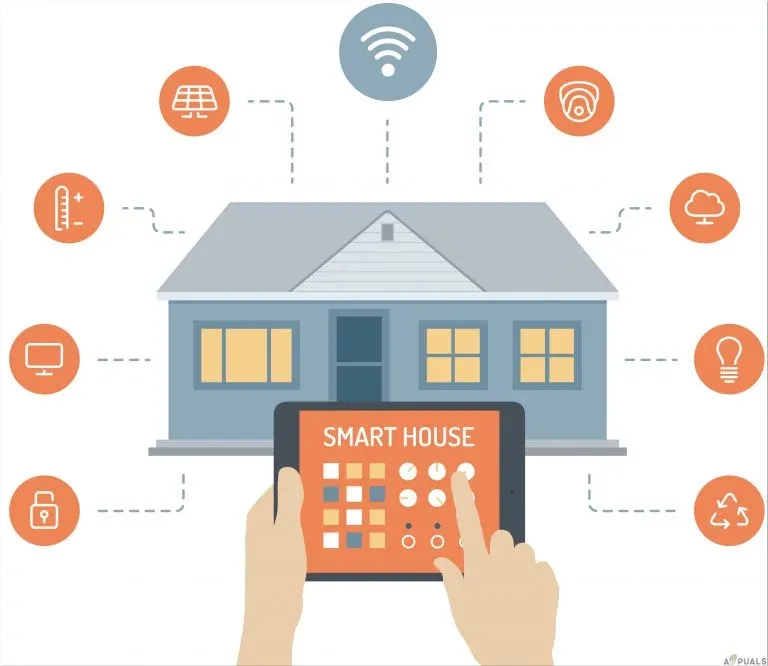
Highlights
- Remote Control and Monitoring
- Home Security
- Energy Management
- Home Entertainment
- Home Comfort and Convenience
- Voice Control
- Smart Lighting
Smart Energy Management System
At present, our environment requires eco-friendly solutions and less energy wastage. For the same reason, it’s an excellent choice to build a project based on a smart energy management system.
Students can create a system for monitoring and controlling the energy consumption in a building. This system will have actuators, sensors, and microcontrollers.
These components help to know the energy usage and control the heating and cooling of systems.
Highlights
- Energy Monitoring and Analysis
- Load Management
- Renewable Energy Integration
- Energy Efficiency Optimization
- Smart Metering
- User Access and Control
Automated Parking System
Whenever we go out, one problem persists; where to park? While some parking areas are managed well, others are in utter chaos. To resolve this issue, you can work on building an automated parking system for your project.
The aim of this project is to let vehicles know about the available space to park and track the spots available for use.
Further, you can use barriers and CCTV surveillance to manage the system.
You can build a smartphone app or use a web interface to access this system.
Highlights
- Space Optimization
- Increased Efficiency
- Reduced Congestion
- Improved Safety
- Automated Entry and Exit
- Remote Monitoring
Arduino-Based GPS Tracker
GPS trackers need no introduction. They help people keep track of their devices, especially vehicles. A GPS tracker is a small device leveraging the Global Positioning System (GPS) that locates the location of any device on which it is installed.
Developing an Arduino-based GPS tracker can be the best bet for electronic students. The GPS tracker can be used with anything and anywhere.
This project requires both hardware and software knowledge. Arduino is a platform for building electronic projects. It consists of both hardware – a programmable circuit board and software – an integrated development environment (IDE).
To get started, you need Arduino with ‘Tiny GPS ++’ and ‘FONA’ libraries installed in the IDE. The hardware components you require are as follows:
- GPS Module
- Arduino Nano
- SIM800L
- 2G SIM card
- OLED Display
- Small 3V battery
- Wires
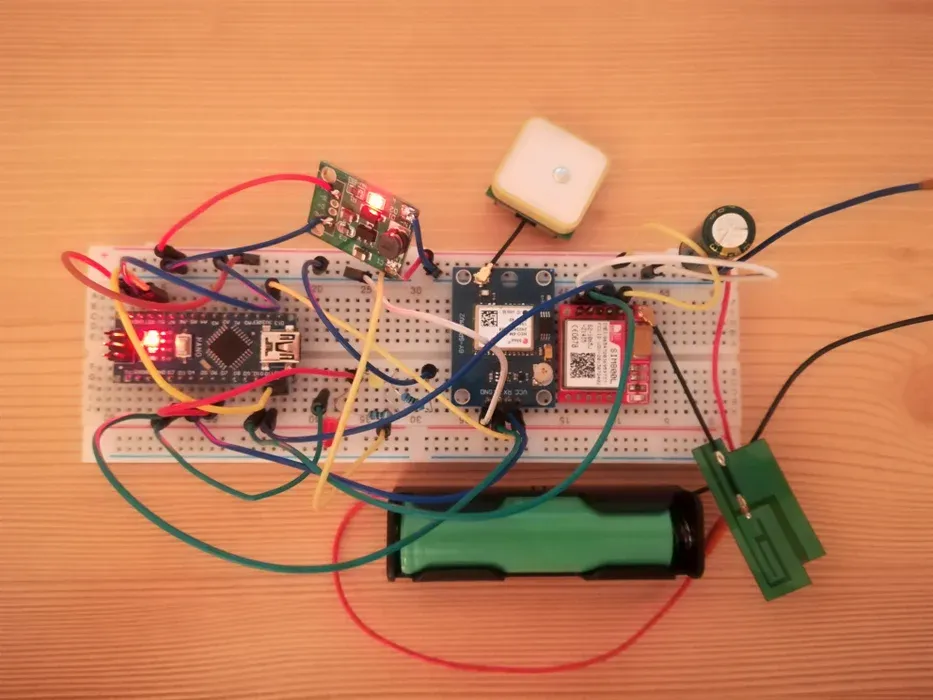
Highlights
- Improved safety
- Minimize fuel costs
- Lower operational costs
- Improved productivity
- Theft recovery
Food Shredder Compost Machine
Creating compost at home by decomposing shredded plant leaves and waste food is time-consuming. The only thing that takes time is the shredding of waste food. However, with the shredder compost machine, the process can be quick, i.e., only a matter of seconds.
You can create a food shredder compost machine that requires less power. The best idea to create a low-power-consuming machine is to use a bicycle. As you pedal the bicycle, the shredding blades do everything. They convert organic waste into pieces that are easy to decompose.
To create this project, you need various hardware components. Some major ones include shredder blades, pedals, shaft & bearing, supporting frame, screws & bolts, contact rollers, etc.
Highlights
- Efficient shredding
- No power consumption
- Bicycle powered
- Easy to use and portable
- No food waste
QR Code Generation
Almost every industry vertical has adopted the QR code to simplify certain processes. It is the best way to add information in a different format without disturbing the packaging and brand identity of the products. In the past few years, its use has proliferated in online payment transfers.
As a computer science student, you can create your own QR code using Python. It requires you to use Tkinter and qrcode Python modules.
The Tkinter module is useful for creating the Graphical User Interface(GUI)[3], and the QR code module generates your QR code image.
Initially, outline the elements you want on your user interface and start writing the code for those elements with Tkinter. And with the help of a QR code, write a function to generate a code at the click of a button.
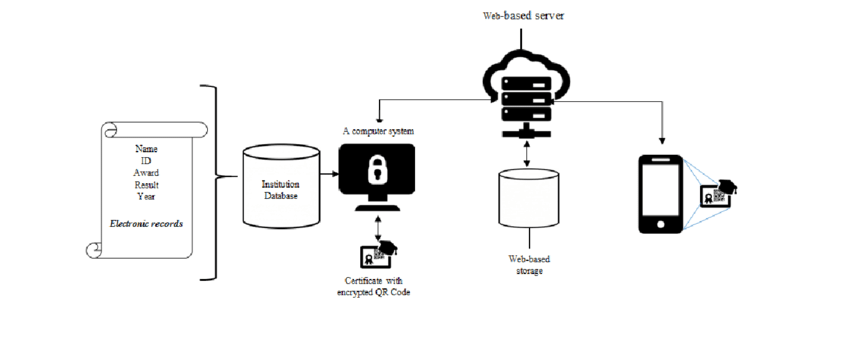
Highlights
- An easy and minimal-space-requiring way to share information.
- Easy to scan through mobile devices
- Stored a good amount of information
How does project-based learning benefit engineering students?
This method has significant advantages over typical classroom learning, making it an excellent resource for engineering students.
Project work sharpens students' problem-solving, organizational, and time management abilities since it requires a hands-on approach. Usually, engineering applicants must complete projects in their last year to gain the required credits. However, young professionals wishing to further their careers might use projects to demonstrate their technical talents to prospective employers.
Project-based learning also encourages cooperation and communication, which are critical qualities for any engineer. Students cooperate in groups, each offering his or her own set of abilities and viewpoints to reach a shared objective. They learn how to interact efficiently, assign duties, and manage disagreements, all of which are important abilities in the job.
Project-based learning helps engineering students to have a more in-depth understanding of what they are studying. Rather than merely memorizing principles, students apply what they've learned to real-world problems, allowing them to see how their education may assist them. This hands-on approach reinforces their learning and makes it more remembered and long-lasting.
Another key advantage of project-based learning is that it equips students for present-day job needs. Employers now are searching for individuals who are capable of thinking creatively, collaborating effectively, and solving difficult challenges. Project-based learning promotes the development of essential skills, ensuring that students are well-prepared to confront job challenges.
Final Remarks
Engineering education has been evolving over time with the objective of increasing students' learning experiences. One of the most effective and beneficial methods for engineering students to learn, understand, recall, and apply engineering ideas is through project-based learning. This method allows students to apply theoretical information in real-world settings, building a deeper grasp of topics and increasing skill development.
Every engineering student is required to develop a project in their degree. For that, you need to brainstorm some impressive ideas. To help you with it, I tried my best to bring the 10 best project ideas.
My tip would be not to follow these blindly but conduct diligent research and understand your interests and requirements. Form a team and get going.
I hope the information above helps you in the best way possible.
Adios!
FAQs
What exactly is a mini project in engineering?
A mini project is an assignment that you aim to finish at the conclusion of each semester, particularly in engineering, to deepen your core understanding through the successful application of theoretical principles.
How do engineering projects improve employability?
Engineering projects are typically focused on current, real-world issues. Organizations want personnel who are knowledgeable about industry trends. While working on a project, you will have the opportunity to do significant study on your topic as well as comprehend the future breadth of a subject field. Such insights are quite useful in the eyes of employers. Furthermore, project portfolios provide a professional touch to your whole presence.
Important links:
[1]- Machine learning algorithms
[2]- Smart home communication protocol
Other important resources:
How Software is Developed? A Step-By-Step Guide
7 Tips to Learn Programming Faster

